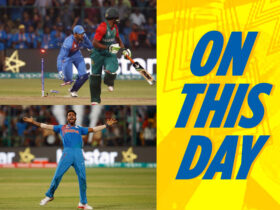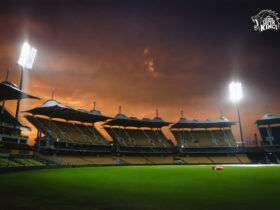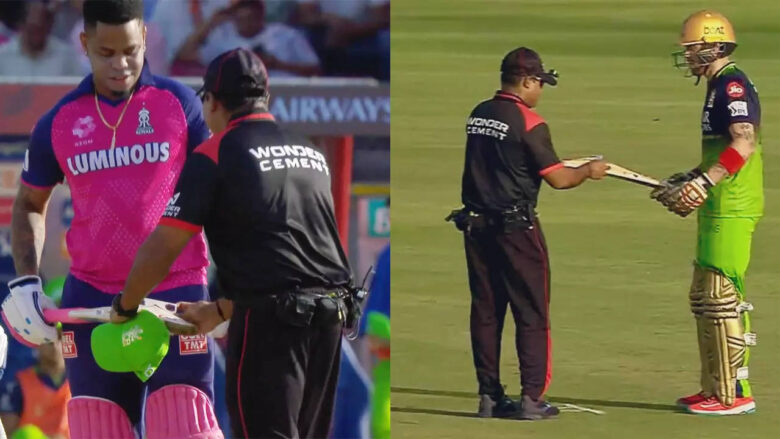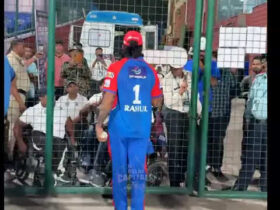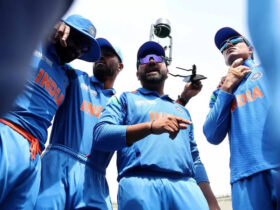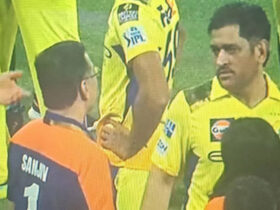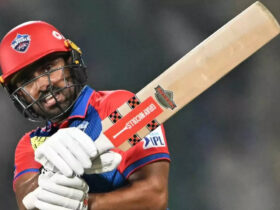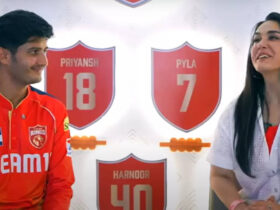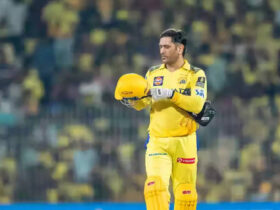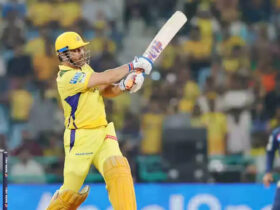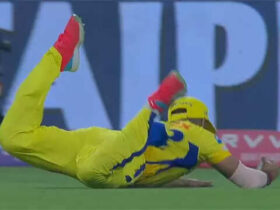Umpires Halt Play to Inspect Bats of Hetmyer and Salt in RR vs RCB IPL Clash
JAIPUR: In an intriguing turn of events during the high-octane Indian Premier League (IPL) encounter between Rajasthan Royals (RR) and Royal Challengers Bengaluru (RCB) at the iconic Sawai Mansingh Stadium, umpires momentarily stopped play to scrutinize the bats of RR’s Shimron Hetmyer and RCB’s opener Phil Salt. This rare occurrence sparked curiosity among fans and players alike, shedding light on the stringent equipment regulations in modern cricket.
The incident unfolded after the dismissal of RR’s explosive opener Yashasvi Jaiswal on the last ball of the 16th over. Hetmyer, the dynamic West Indian batter, strode to the crease at No. 5, joining Dhruv Jurel with the intent to escalate RR’s scoring rate in the crucial death overs. However, before he could face a delivery, the on-field umpire intervened to measure Hetmyer’s bat using a bat gauge, ensuring it adhered to the IPL’s equipment regulations under Law 5.7 of the playing conditions.
Later in the match, a similar inspection awaited RCB’s opening batter Phil Salt as he prepared to launch his team’s innings. Both checks were conducted seamlessly, with Hetmyer’s bat passing the test without issue. Had it failed, the likely consequence would have been a simple directive to switch to a compliant bat, as IPL rules currently do not impose point penalties for such infractions.
Why the Sudden Bat Checks?
The inspections were a routine yet rare enforcement of the Marylebone Cricket Club (MCC) Laws of Cricket, adopted by the IPL, which govern bat dimensions to maintain a fair balance between bat and ball. According to the regulations, a cricket bat must not exceed 38 inches (96.52 cm) in overall length, including the handle. The blade’s specifications are equally precise: a maximum width of 4.25 inches (10.8 cm), depth of 2.64 inches (6.7 cm), and edge thickness of 1.56 inches (4.0 cm). Additionally, the handle must not constitute more than 52% of the bat’s total length, and protective coverings on the blade and toe are capped at minimal thicknesses of 0.04 inches (0.1 cm) and 0.12 inches (0.3 cm), respectively.
These meticulous standards ensure that no player gains an undue advantage through oversized equipment. The bat must also pass through a standardized bat gauge, a metallic frame used by umpires to instantly verify compliance. While such checks are uncommon in the IPL, they underscore the league’s commitment to upholding the spirit and laws of the game.
Historical Precedents of Bat Regulation Breaches
This isn’t the first time bat dimensions have grabbed headlines in professional cricket. A notable incident occurred in the English County Championship 2022, where Essex batter Feroze Khushi was forced to change his bat mid-innings after it failed a size check during a match against Nottinghamshire. At the time, Khushi had scored 21 runs off 27 balls, but the violation led to a severe penalty for Essex—a 12-point deduction—which ultimately cost them a higher standing in the championship. Without the deduction, Essex would have clinched third place instead of settling for fourth behind champions Surrey.
Unlike the County Championship, the IPL’s framework appears more lenient, focusing on correction rather than punishment. However, such incidents ignite discussions about whether stricter penalties should be introduced to deter non-compliance.
Impact on the Game and Beyond
While the bat inspections caused only a brief delay in the RR vs RCB clash, they served as a reminder of the evolving nature of cricket, where technology and regulations intersect to preserve fairness. For Hetmyer, known for his powerful striking (with a career IPL strike rate of 152.25 across 60 matches as of 2023), and Salt, an emerging force for RCB, the checks were mere formalities that didn’t derail their focus.
As the IPL continues to captivate millions worldwide, moments like these highlight the behind-the-scenes efforts to maintain the game’s integrity. Fans at Jaipur and beyond were left intrigued, with social media abuzz about the rarely seen application of bat gauges. Will such checks become more frequent in T20 cricket, or was this a one-off spectacle? Only time will tell, but one thing is certain: every inch matters—even in a game of big hits.


